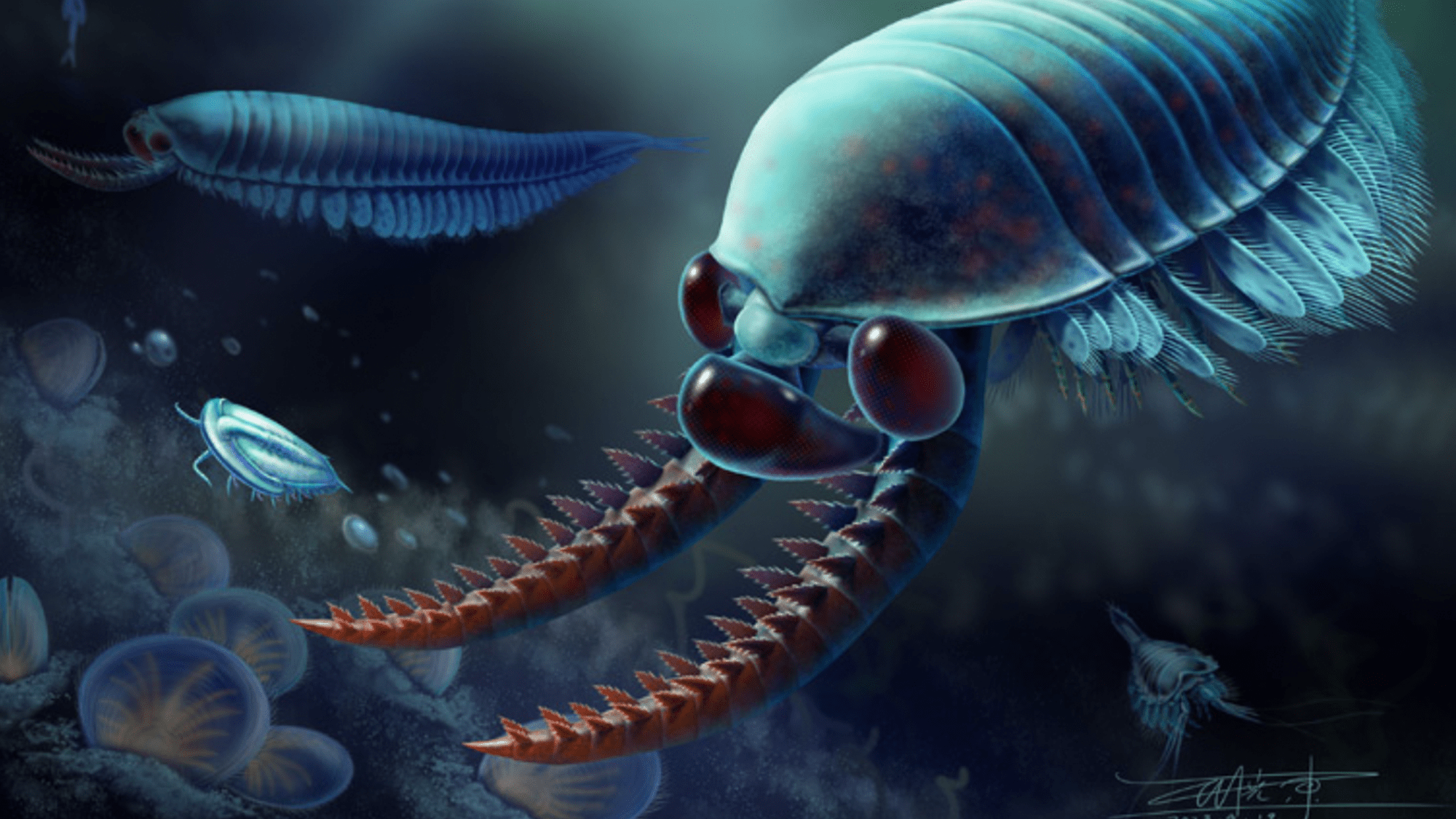

A newly discovered three-eyed relative is disappointingly unrelated to the eerie three-eyed ravens of Game of Thrones. But this Cambrian-era beast is a relative of today’s insects and boasts some fearsome limbs. The unique fossilized animal was described in a study published August 28 in the journal Current Biology.
[Related: This ancient ‘mothership’ used probing ‘fingers’ to scrape the ocean floor for prey.]
The animal, scientific name Kylinxia, was found in 520 million year old rocks in a fossil deposit called the Cambrian Chengjiang biota near the town of Chengjiang in southern China. More than 250 species of exceptionally well-preserved fossil organisms have already been described from this location, which gives scientists a glimpse of what was going on in the world’s oceans as they developed.
Importantly, Kylinxia is filling in some evolutionary gaps in our understanding of the evolution of animals known as arthropods. This phylum of animals includes insects, crabs, shrimp, scorpions, spiders, and centipedes among others. Arthropods have an exoskeleton made of a tough material called chitin that is mineralized with calcium carbonate, as well as a body divided into segments and paired jointed appendages. They are considered some of Earth’s most successful species and over 85 percent of all known animal species are classified as arthropods.
Kylinxia was about the size of a large shrimp, had a pair of limbs that it likely used to catch prey, and a signature trio of eyes on its head.
“Most of our theories on how the head of arthropods evolved were based on these early-branching species having fewer segments than living species,” Greg Edgecombe, a co-author of the study and arthropod evolution expert at London’s Natural History Museum, said in a statement. “Discovering two previously undetected pairs of legs in Kylinxia suggests that living arthropods inherited a six-segmented head from an ancestor at least 518 million years ago.”
After its initial discovery, Kylinxia was imaged using a CT scanner. The scan revealed that more soft parts of the animals’ anatomy were also buried in the rock. While there are plenty of species of arthropods preserved in the fossil record, most fossils only preserve the hard skeletons.
[Related: Newly discovered fossils give a whole new meaning to jumbo shrimp.]
“The preservation of the fossil animal is amazing,” study co-author and University of Leicester PhD student Robert O’Flynn said in a statement. “After CT-scanning we can digitally turn it around and literally stare into the face of something that was alive over 500 million years ago. As we spun the animal around, we could see that its head possesses six segments, just as in many living arthropods.”

This new specimen was nearly complete, which enabled the team to identify the six segments that made up its body: the head, a second segment with its grasping limbs, and the other four segments which have a pair of jointed limbs.
“Robert and I were examining the micro-CT data as part of his doctoral thesis in the hope of refining and correcting previous interpretation of head structures in this genus, Kylinxia,” study co-author and Yunnan Key Laboratory for Palaeobiology paleobiologist Yu Liu said in a statement. “Amazingly, we found that its head is composed of six segments, as in, e.g., insects.”
